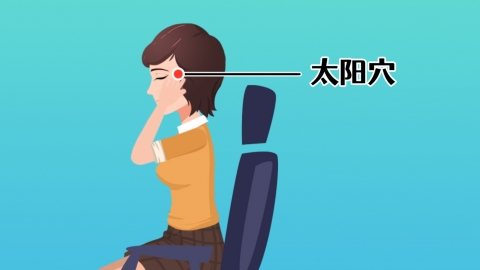What causes pain in the temples?
Temple pain may be caused by insufficient sleep, excessive mental stress, dietary factors, migraines, temporal arteritis, and other reasons. Management should be based on specific situations. It is recommended to visit a hospital promptly and follow medical advice for treatment.

1. Insufficient Sleep: Long-term late nights or poor sleep quality can prevent the brain from getting enough rest, leading to nervous system dysfunction and temple pain. Daily routines should be regular, ensuring 7-8 hours of sleep per day. Avoid using electronic devices before bedtime and create a quiet, dark, and temperature-appropriate sleeping environment.
2. Excessive Mental Stress: Stress from work or life can cause persistent mental tension and tightness in the head muscles, resulting in temple pain. Stress can be relieved through physical activities like jogging or yoga, or by practicing deep breathing and meditation to relax the body and mind and alleviate muscle tension, helping to reduce pain.
3. Dietary Factors: Consuming excessive caffeine or alcohol, or eating spicy or cold foods, may irritate blood vessels and nerves, causing temple pain. It is recommended to reduce the intake of such foods and beverages, drink more warm water, and consume more light foods such as vegetables and fruits.
4. Migraine: A combination of genetic, endocrine, dietary, and other factors can lead to dysfunction in the contraction and dilation of intracranial blood vessels. During an attack, pulsating pain may occur on one side of the temple, often accompanied by symptoms like nausea, vomiting, photophobia, and phonophobia. Patients can take medications such as ibuprofen sustained-release capsules, zolmitriptan tablets, or flunarizine hydrochloride capsules under a doctor's guidance to alleviate symptoms.
5. Temporal Arteritis: Inflammation occurs in the temporal artery due to autoimmune and other factors, causing thickening of the vascular wall and narrowing of the lumen, leading to temple pain. The affected area's skin may appear red and be tender to touch, and general symptoms such as fever and fatigue may also be present. It is recommended to take medications such as prednisone tablets, aspirin enteric-coated tablets, or methotrexate tablets under medical guidance to relieve discomfort.
In daily life, maintaining good living habits, such as regular作息, moderate exercise, and healthy eating, can also help relieve stress.
References:
[1] Wang Yanlin, Pang Miaoyi, Wang Peipei, et al. Research Progress on the Interaction Mechanism Between Migraine and Sleep-Wake Disorders [J]. Chinese Journal of Pain Medicine, 2025, 31(01): 15-22.
[2] Yan Bin, Zhou Guoqing. Diagnostic and Therapeutic Characteristics of Temporal Arteritis [J]. Shanxi Medical Journal, 2012, 41(05): 454-455.






